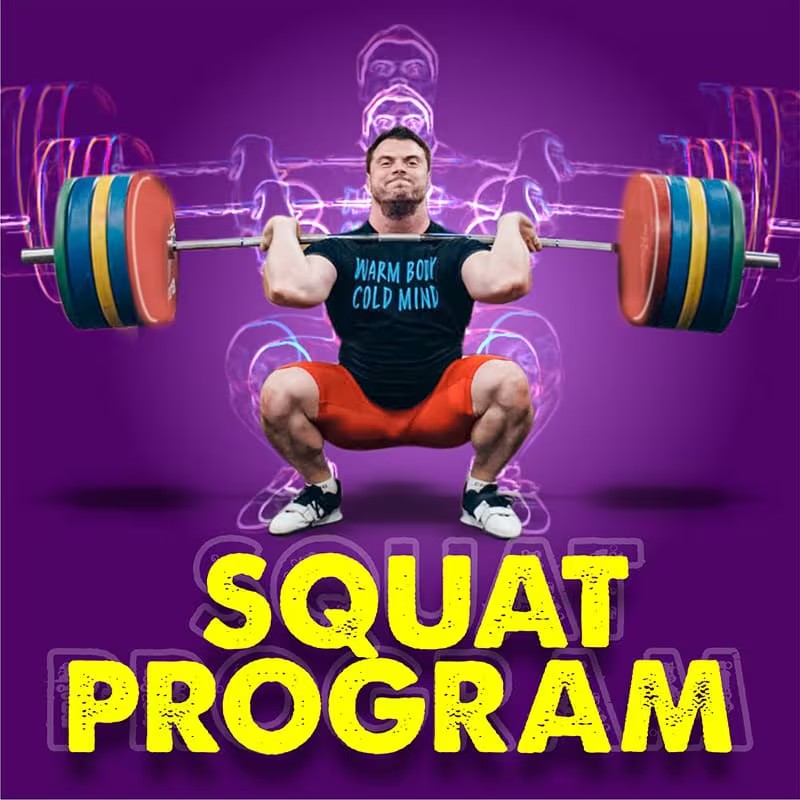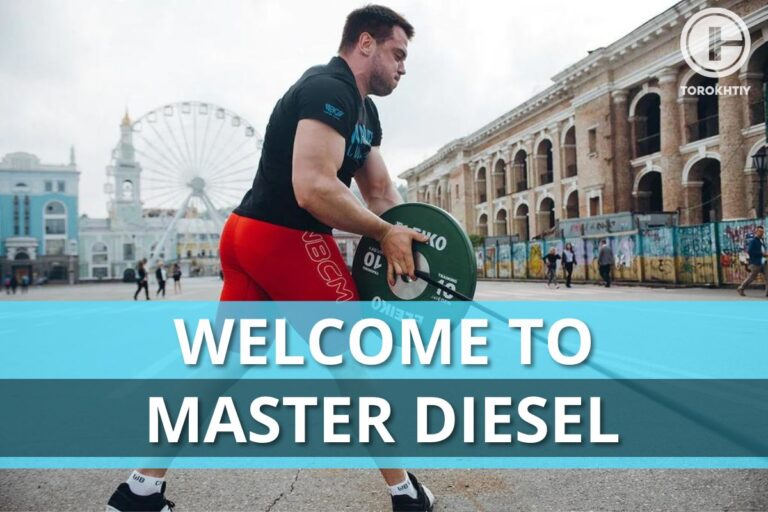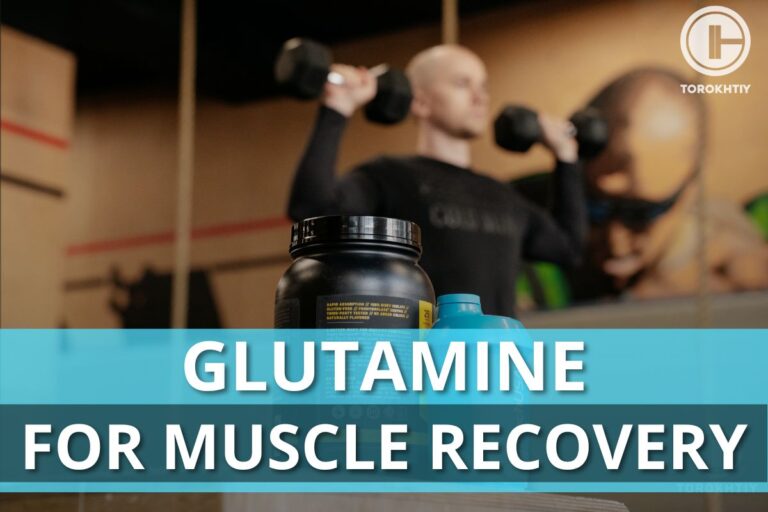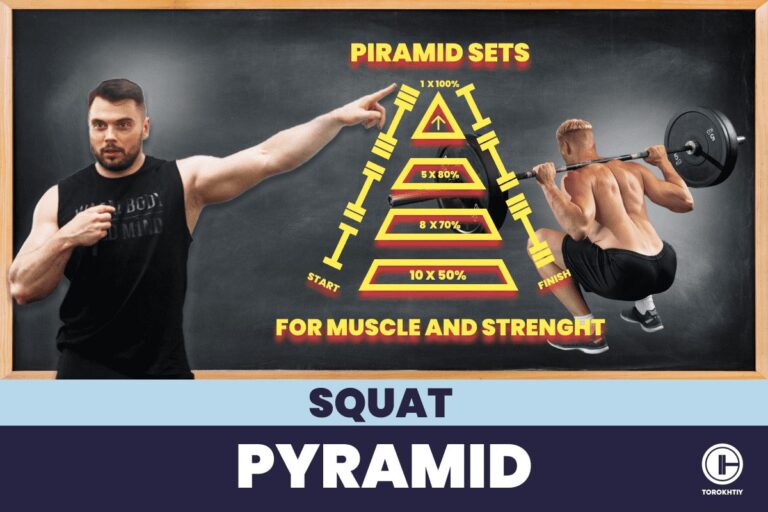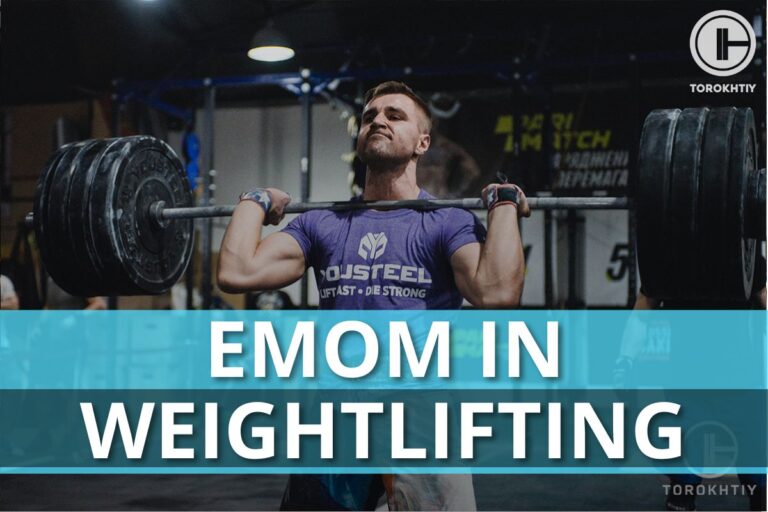Spotter’s Handbook: How to Spot a Squat?
You’re at the gym, minding your own business, and someone asks for your help to spot them during a squat. You’re probably tempted to lend a helping hand, but take a break and think about whether you know what you’re doing or not.
Spotting is vital, especially for beginners or those that are attempting new weights. But if you’ve never done it before, you might end up doing more damage than good because it’s not just about being there, it’s about being prepared.
It’s easy to be a spotter when everything is going smoothly. So, how to spot someone during squats? What to do, how to do it? Let’s dive in, and acquire the answers.
Get ready to learn how to spot someone squatting like a pro!
Position yourself behind the lifter, placing one of your feet close to the middle between athletes’ feet (but not cross the hips way, when athlete will up). Prepare your hands for help by moving them close to the barbell. When you see that the lifter is close to failure and can’t get up, place your hands under the bar and push it up to help lift it up.
How to spot a squat? Stand behind the lifter, place one of your feet midway between the athlete’s feet, without obstructing. Hold your hands near the barbell. If the lifter struggles, gently place your hands under the bar and assist by pushing upward to help the lifter complete the lift.
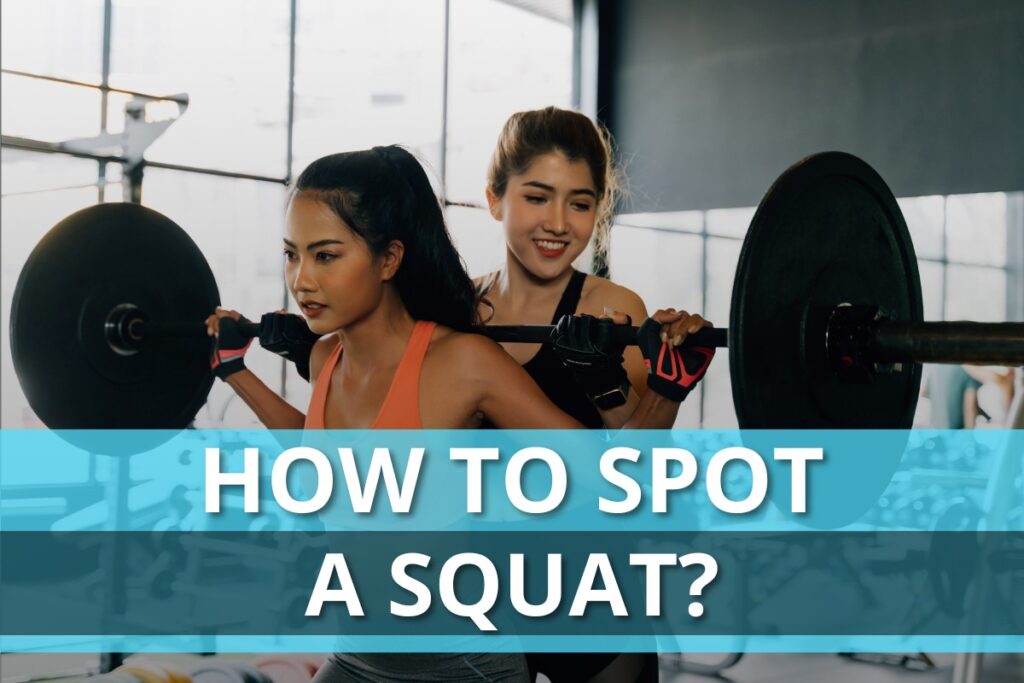
What Is Squat Spotting?
Think of squat spotting like having a buddy at the gym that watches your back (literally). A spotter plays a big role in supporting you during squats and making sure you’re safe. They’re like a safety net, there to catch you if you stumble and help you push through the reps.
There are a few different squat variations out there, and each of them has unique technique and different needs when it comes to spotting. Say you’re doing back squats, where the barbell rests on your upper back. If you have a spotter, they’ll stand behind you, ready to support you and guide you as you lower yourself into the squat and then go back up. They’ll keep an eye on your form and offer verbal cues to help you keep your form correct and make sure the barbell stays balanced.
If you’re doing front squats, where the barbell is at the front of your shoulders, you might need a slightly different approach. Your spotter can stand behind you or you can have two spotters on each side. This is safer and it is easier from the spotter’s perspective because they can help you better if you need assistance with posture or support.
How to Prepare for Spotting? Step-by-step Guide
Here’s a brief step-by-step guide on how to spot a squat. It starts with prepping the area, meaning you need to remove any obstacles that could impede the lifter’s or your movement.
Make sure the squat rack is set up properly and before you start, discuss the planned set (including the number of reps and any signals the lifter will use if they need immediate help). Get close to the lifter and be ready to assist.
Keep your feet shoulder-width apart for stability and hands on either side of the lifter’s torso or armpits, depending on what you agreed upon. Stay focused throughout the lift and observe the lifter’s form. be ready to support them if they start to struggle or if their form breaks.
Now, let’s get into all of this in more detail.
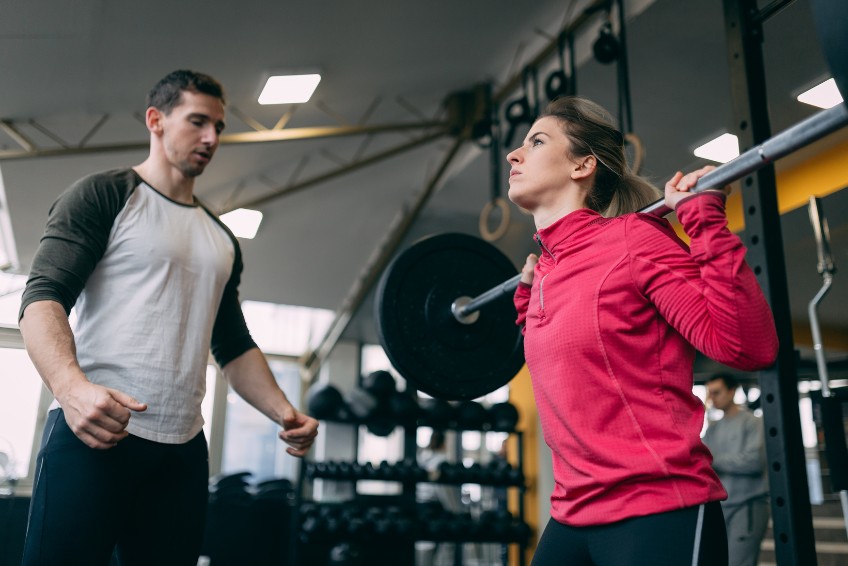
2. Prepare the area
Spotting squats is pretty simple. As a squat spotter, the first thing you need to do is to get the positioning right. Get behind the lifter or slightly to their side, with your hands ready to support them. You should have a clear view of both the lifter and the barbell, so you can react quickly if anything goes wrong.
Review the squatting area for any obstacles or hazards and make sure that if there’s a squat rack being used, it’s adjusted correctly, including the height of the safety bars or spotting arms. Make sure the barbell is secured properly and that the weight is not too much for the lifter’s capabilities.
3. Discuss all before start
During this preparation phase, communication is key, so talk to the lifter before they start squatting and ask if there are any specific cues or support they need during the lift. When you establish clear communication, you know both of you are on the same page and you can work together as a team.
As they’re lifting, maintain open communication, offer verbal cues and reassurance when they need it, especially if they’re feeling a bit anxious because that can affect their performance. Let them know if their form is good or whether they need to tweak some things, like the stance or technique.
The lifter should also feel comfortable communicating with you if they need help or feel discomfort during lifting.
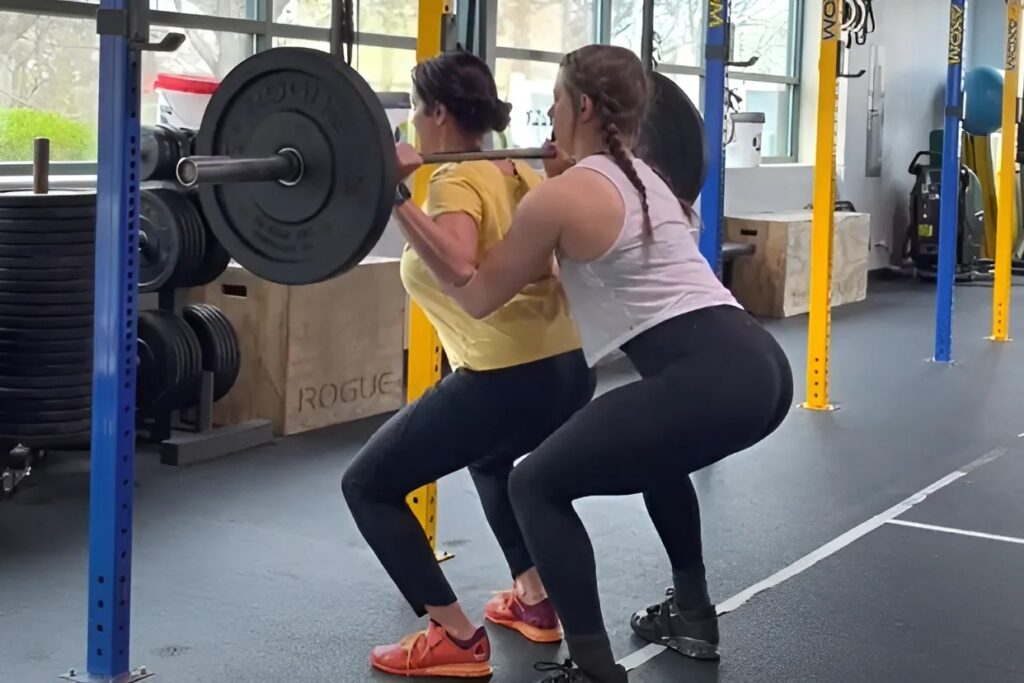
Be ready to drop the weight
The lifter shouldn’t start squatting without both of you knowing what happens if things go wrong, meaning, the lifter can’t manage the weight, they start to drop it, etc. If you see they start to drop the weights, your job is to help control the descent of the bar as safely as possible.
If you’re behind them, apply a supportive grip around their chest or waist to guide them and the weight back into a safe position or help them safely ditch the weights. If using a squat rack with safety bars, make sure they’re properly adjusted to catch the bar if the lifter needs to bail. If not, guide them in safely dropping the weights away from both your and their feet to avoid injury.
Tips From the Champ
Before you start, talk to the lifter and see how many reps they want to do so you can predict what they might need. Also, agree on an emergency plan in case the lifter starts to struggle early in the lift and can’t be helped in the lowest position. This way, you’re both on the same page and you can act quickly if you need to.
Olympic Weightlifting Champion
When the Spotter is Needed?
Spotters are especially important during RMs, where there’s higher risk of failure. Beginners also need spotters because they’re probably a bit nervous and anxious when lifting, and that can affect the performance. Aside from this, any situation where the lifter is pushing their limits or trying new weights becomes risky if there’s no spotter involved.
3 Most Common Spotting Techniques
There’s not an overabundance of techniques because let’s be real – how many different ways are there to stand close to a person and keep an eye out for when they need help? However, just because there’s not a bunch of ways to spot it doesn’t mean you don’t have to learn those that exist because it can mean a difference between actually helping someone and being completely useless.
1. Single-Spotter with Focus on the Lifter
You stand behind the lifter and you’re ready to help them. Keep your hands close to their waist or upper back (we promise, it’s not creepy, it only sounds like that) and provide support and guidance as they squat. This method works great for both front and back squats, and it gives the lifter stability and reassurance.
In this variation you provide body support. Stand directly behind the lifter and squat in unison with their movement. Wrap your arms around their torso (make sure you don’t restrict their motion!) and focus on supporting their body rather than the barbell. When needed, grab the torso and push the lifter upward to help him get up.
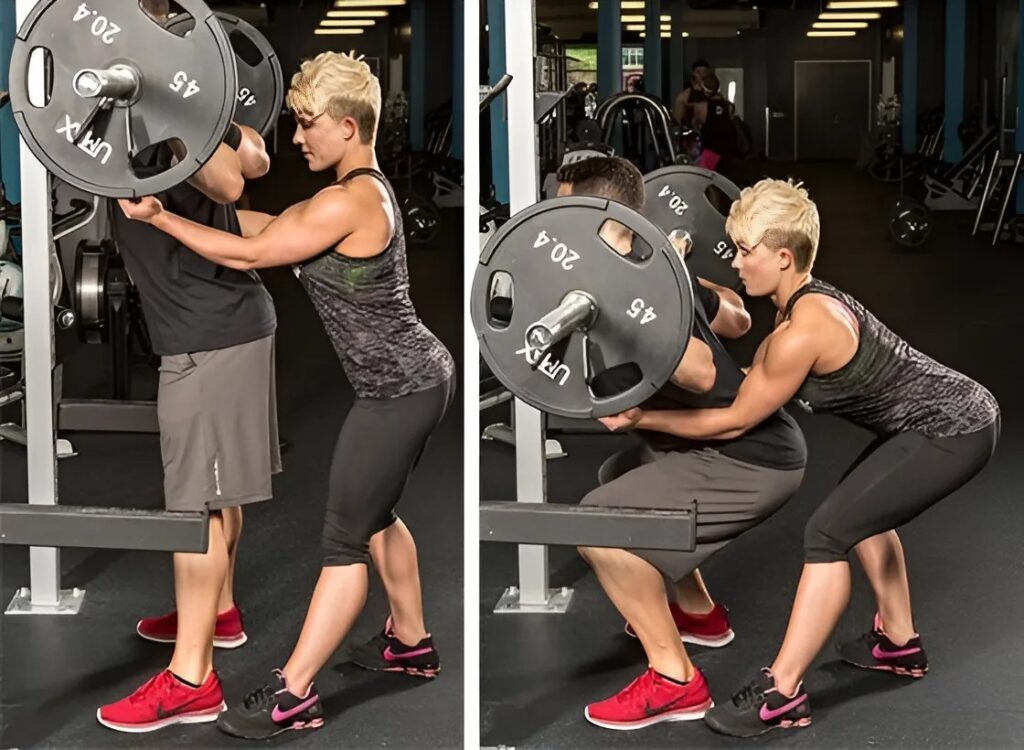
2. Single-Spotter with Focus on the Barbell
This is close to the first one but with one difference. You stand directly behind the lifter too, your hands hover close to the bar without touching it, and you’re ready to help. When needed, push the barbell upward if the lifter struggles to help him get up.
3. Side-Spotting a Back Squat (with Two Spotters)
For you to be able to spot back squat, get one spotter on each side of the lifter. This allows them both to closely monitor the lifter’s form and the movement of the barbell. Each spotter can place a hand near the lifter’s waist or their upper arm to support them. This technique is like an extra layer of stability and support during squatting.
| SPOTTING TECHNIQUE | DESCRIPTION |
|---|---|
| Single-Spotter with Focus on the LIfter | Stand directly behind the lifter, providing body support by squatting in unison and wrapping arms around their torso without restricting motion. Focus on their body and assist with pushing up if needed. |
| Single-Spotter with Focus on the Barbell | Stand directly behind the lifter with hands near the bar, ready to help by pushing the barbell up if the lifter struggles. |
| Side-Spotting a Back Squat (with Two Spotters) | One spotter on each side of the lifter, placing a hand near the lifter’s waist or upper arm for support. This method gives extra stability and monitors the lifter’s form and barbell’s movement. |
Spotting Female Lifters
Whether your spotter is male or female, it won’t affect the performance, but things are a tiny bit different if you’re the one spotting a female lifter, so it’s important to know how to spot female squat.
First and foremost, you must respect personal boundaries to make sure the lifter feels safe, comfortable, and supported. This can refer to the way you place your hands; it can mean preferences regarding physical contact, but whatever the case, make sure to establish clear boundaries before they start lifting. This way, you’ll promote a safe, comfortable environment without anyone feeling awkward.
Female lifters have different levels of strength, as well as body proportions compared to male lifters, so you’ll need to adjust your spotting techniques to match those differences. For instance, a female lifter may need more help during certain phases of the lift or adjust their positioning to accommodate differences in body shape.
Again, communication is key; it doesn’t matter who you’re spotting. Be sure to check in regularly and ask for feedback to confirm the lifter has everything they need. Proper squat spotting is all about sensitivity, communication, and adaptability.
Tips From the Champ
Non-verbal communication cues are fantastic because relying on verbal cues might not do the trick, and you need to make the lifter comfortable and respect their personal boundaries, which sometimes means no physical contact. Pay attention to the lifter’s body language and facial expressions to see what their comfort level and readiness is. Subtle gestures and nods go a long way and convey support without intruding on personal space.
Olympic Weightlifting Champion
6 Common Mistakes in Squat Spotting
A good spotter pays attention to details and understands the lifter’s needs. But even the most experienced spotters sometimes make mistakes, and that can cause issues with safety. Let’s see what are the most common mistakes and how you can avoid falling prey to them.
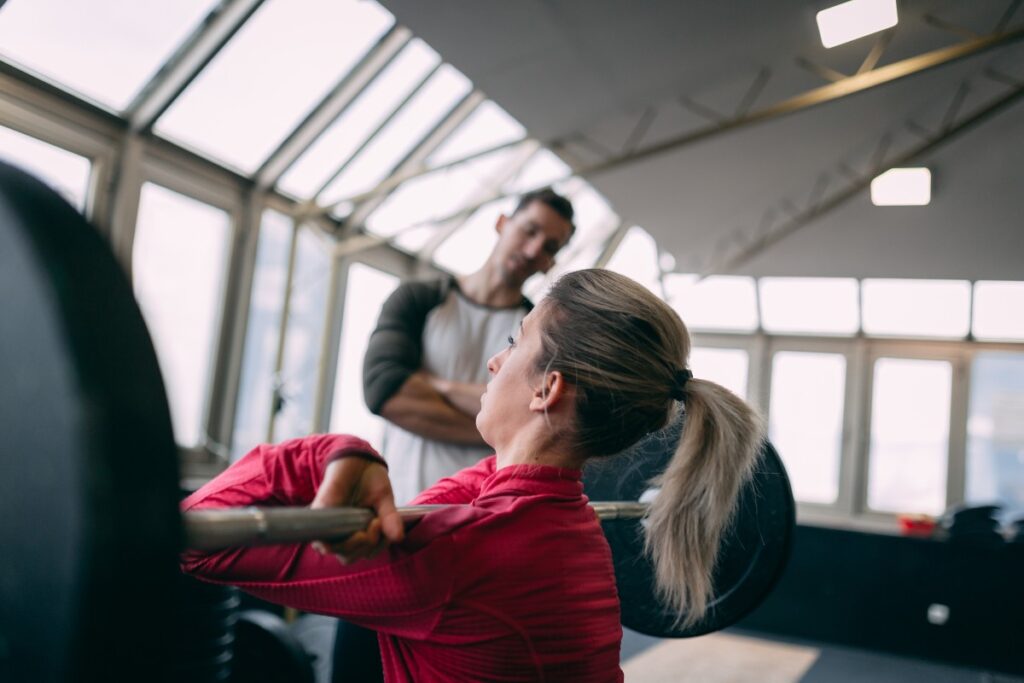
❌ Not Being Attentive
One of the most common mistakes people do is not staying fully focused on the lifter throughout the entire workout. If you’re not attentive enough, you’ll miss important cues and your reactions will be delayed, which can be dangerous and cause accidents and injuries. Stay focused and ready to intervene if you need to.
❌ Poor Communication
A squatting session can’t be successful if there’s not enough communication between the spotter and the lifter. Pay attention to verbal instructions and establish clear cues.
🔻12 Week Squat Program by Oleksiy Torokhtiy
Do you want to double your squat strength? In just 12 weeks, you’ll be able to boost your squat results.
This program transforms any ordinary squat into a powerful athletic movement.
What’s included:
- 12 weeks of squat programming;
- Effective combination of sets, reps, and weights;
- Fully designed and coached by Oleksiy Torokhtiy;
- Over 60+ movements, banded work, and weight training;
- Accessory work for core, joint stability and injury prevention;
- Max out on back squat and front squat at the end.
Start now and boost your squat results!
❌ Incorrect Hand Placement
Your hands need to be in certain spots for a reason, otherwise you can’t support the lifter properly. Too high, too low, at the wrong angle… All of this can mess with the lifter’s stability and increase the risk of injury. Before you start spotting someone, learn about the proper hand placement.
❌ Relying on the Equipment Too Much
Squat racks and safety bars can give some extra security, but if you rely only on them, without proper spotting techniques, you’re in a pickle. Equipment can help to a certain extent, that’s true, but it’s not a miracle worker so don’t put all your faith in it. You always need to stay actively engaged in spotting the lifter, even if they’re using equipment that makes the lift safer.
❌ Standing Too Far From the Lifter
Where you stand matters, so there shouldn’t be too much distance between you and the lifter because you won’t be able to react fast enough. You need to be close enough to provide immediate support without restricting the lifter’s movement.
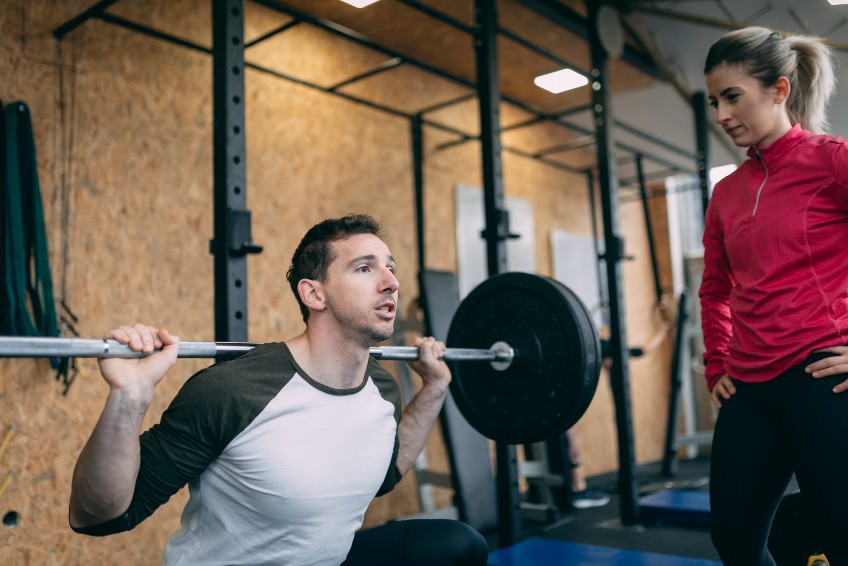
❌ Delayed Intervention
Another common mistake is waiting until the lifter fails to manage their weight to help them. This makes the lift more dangerous and more difficult to recover from. If you want to spot effectively, you need to be able to recognize early signs of struggle and intervene on time to prevent injuries and problems.
Tips From the Champ
Tactile feedback is a great way to improve communication and support. Use your hands to provide gentle tactile cues; this can mean lightly guiding the lifter’s movement or applying subtle pressure in the right direction. This can help with form and stability, and it will strengthen the connection between you and the lifter.
Olympic Weightlifting Champion
Spotting Alternatives
Regardless of the type of squat, having a spotter makes all the difference, but if you’re training without a spotter, using a squat rack with spotter arms or safety bars is a good idea. You should also practice the technique for safely dropping the bar when feeling overwhelmed, so you have a fallback if there’s no spotter near you.
FAQ
Do you need a spotter for squats?
The correct answer is ‘it depends’. A spotter is always a good thing (if the spotter is experienced). However, a spotter is not a requirement when performing squats. In a situation where you’re a beginner, are trying to lift more than usual (weight/reps), or are unsure of yourself, a spotter is very beneficial.
Conclusion
So, what did we learn from all of this? Do you need a spotter for squats? In short – no. You don’t NEED a spotter, but should you have one? Yeah, definitely!
Think of a spotter as an extra layer of safety. If you’re a beginner, or are lifting heavy, safety is paramount. But even if you’re an experienced lifter, you’ll still enjoy some benefits if you opt for a spotter. While someone has your back (literally) you’re free to focus on your weightlifting technique, thus boosting your overall performance when doing the squat movement.
Keep in mind that when doing the spotting, or having a spotter – communication is key. There’s no way around it. That’s why having a friend spot you is more seamless, as you’ve likely already developed nonverbal communication, and someone that is familiar with your lifting technique and your challenges will be more cautious for those specific things. Nonverbal cues are seriously underrated. Also, verbal cues, aka a good pep talk, can also cause a great surge of motivation, so keep that in mind as well.
And lastly, think about boundaries. It is always nice to help a fellow lifter by offering assistance as a spotter (if you see them struggling). But, if the other party says no, or there’s any source of discomfort/stress, sometimes it’s easier to mind your own business.
Now what about you? Have you ever spotted someone during a squat, or have you ever had someone spot you while squatting? What was that experience like for you? Also, if you have anything to add, any questions, any suggestions, your personal tips & tricks – we are all ears! (or eyes, since we’re reading this :S). Be sure to leave your thoughts in the comments section below.
Keep squatting; keep spotting! Let’s stay safe!
References:
- Andrew Sheridan, David C. Marchant, Emily L. Williams, Hollie S. Jones, Phil A. Hewitt, Andy Sparks, “Presence of Spotters Improves Bench Press Performance: A Deception Study” Journal of Strength and Conditioning Research 33, no. 7 (2019): 1755-1761.
- Brett S. Nickerson, Gilberto Salinas, Jessica M. Garza, Seongkwan Cho, Ronald L. Snarr “Impact of Spotter Sex on One Repetition Maximum Bench Press Performance,” Journal of Strength and Conditioning Research 35, no. 9 (2021): 2397-2400.
- Drew Rykert, Abigail Larson, Chad Harris, Kent J. Adams, “Effect of Spotters on State Anxiety and Self Confidence During Maximal Squatting Among Male High School Athletes,” Medicine and Science in Sports and Exercise 50(3): 179, May 2018
- Shoshana Pritzker RD, CDN, CSSD, CISSN “How to Be a Good Spotter,” Very Well Fit, https://www.verywellfit.com/how-to-be-a-good-spotter-5216746#citation-2 (accessed March 14th, 2024)
- Tony Lu “Is It Safe for You to Lift Weights Without a Spotter?” Medium, https://medium.com/grad-excel/is-it-safe-for-you-to-lift-weights-without-a-spotter-2f04e59ee133 (accessed March 14th, 2024)
- Photos by gettysignature canva.com, bodybuilding pinterest.com, twinsterphoto canva.com
Why Trust Us?
With over 20 years in Olympic Weightlifting, our team does its best to provide the audience with ultimate support and meet the needs and requirements of advanced athletes and professional lifters, as well as people who strive to open new opportunities and develop their physical capabilities with us.
By trusting the recommendations of our certified experts in coaching, nutrition, dietology, and sports training programming, as well as scientific consultants, and physiotherapists, we provide you with thorough, well-considered, and scientifically proven content. All the information given in the articles concerning workout programming, separate exercises, and athletic performance, in general, is based on verified data. We ensure that you can rely on our professionals’ pieces of advice and recommendations that can be treated as personalized ones which will benefit you and fully meet your needs.
The product testing process is described in more detail here
Author: Sergii Putsov
Head of Sport Science, PhD
Best Results: Snatch – 165 kg,
C&J – 200 kg
Sergii Putsov, Ph.D., is a former professional weightlifter and National team member, achieving multiple medals in the 94 kg weight category at national competitions. With a Master’s degree in “Olympic & Professional Sport Training” and a Sport Science Ph.D. from the International Olympic Academy, Greece, Sergii now leads as the Head of Sport Science. He specializes in designing training programs, writing insightful blog articles, providing live commentary at international weightlifting events, and conducting educational seminars worldwide alongside Olympic weightlifting expert Oleksiy Torokhtiy.


